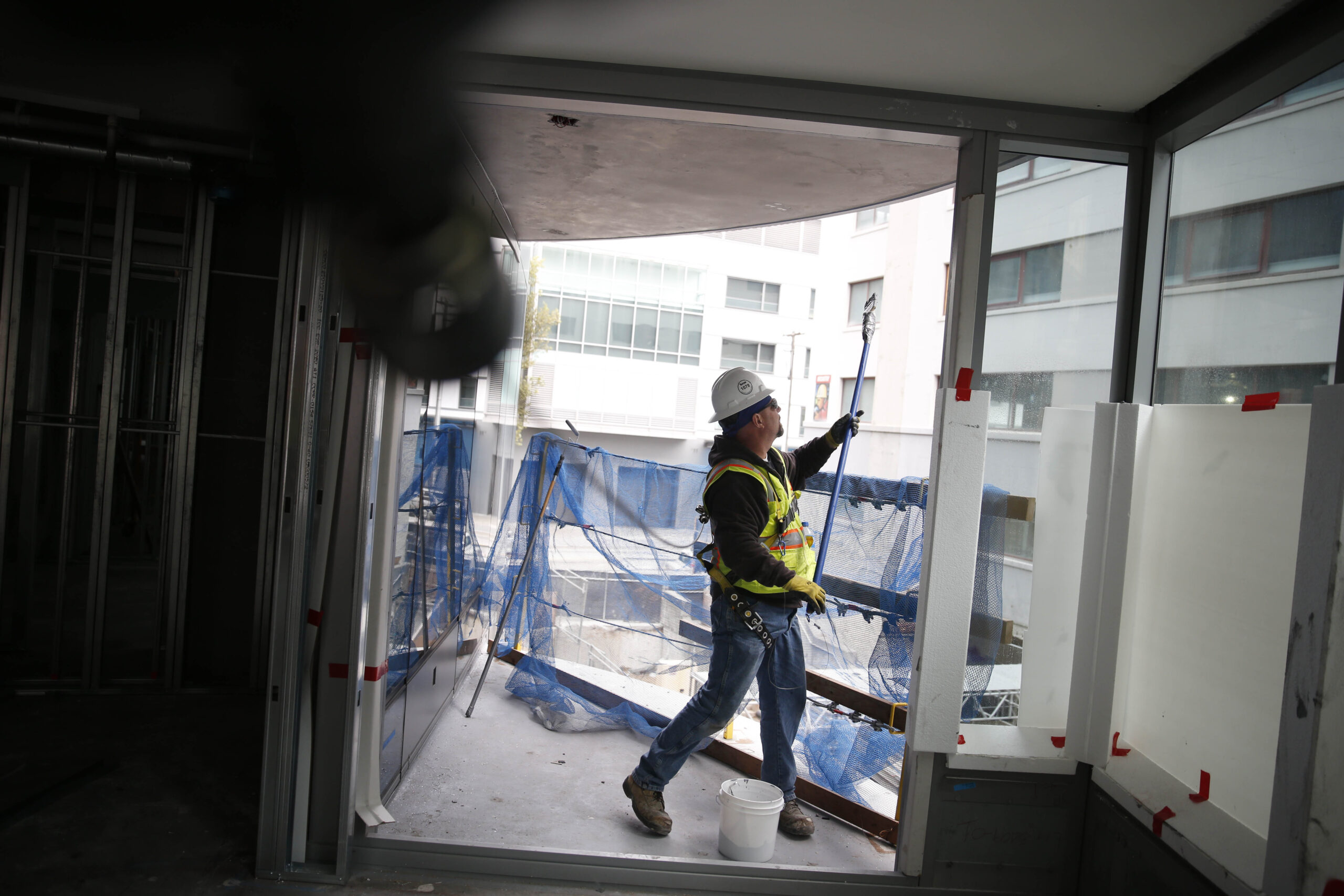As part of an effort to make it more financially feasible to build housing in the city, an advisory committee on San Francisco’s affordable housing policy has recommended a significant cut in the percentage of required affordable units in condominium projects.
San Francisco’s Inclusionary Housing Ordinance requires condominium developers to designate a percentage of units in their projects as subsidized affordable housing to sell at below-market rates. Alternatively, developers can pay “off-site fees” that help fund stand-alone affordable developments.
The Inclusionary Housing Technical Advisory Committee, made up of housing industry representatives and advocates and organized by the Controller’s Office, voted on the recommendations at a Wednesday meeting.
The new recommendations would lower the required number of affordable units in apartment projects from a high of over 23% to a new range as low as 12%, until another feasibility analysis is done in 2026.
These new percentages would apply to new construction, but the committee also recommended that “decision-makers consider allowing currently entitled projects to re-entitle with lower requirements, for a more limited period of time.”
The recommendations were originally released last March in a report describing current requirements as infeasible, even when state density incentives are applied.
That echoes long-standing complaints by developers that housing projects don’t make financial sense. This is especially true in the post-Covid environment, marked by higher costs and a real estate downturn. Reduced requirements would allow at least some smaller-scale condo projects to “pencil,” according to the report.
As possible incentives, the committee also approved forwarding what was described as a “menu of potential unendorsed ideas,” which range from property tax offsets and other subsidies.
Those ideas were part of a presentation made by Century Urban, a project management company, at Wednesday’s meeting. An additional list of ideas from the Council of Community Housing Organizations (CCHO), an affordable housing group, was also included.
The range of ideas reflects tensions between different interests on the committee.
Last September, two former leaders of the council, Peter Cohen and Fernando Marti, were appointed by the Board of Supervisors; Cohen’s appointment attracted some controversy, because some supervisors found his approach divisive.
Cohen also made a presentation at Wednesday’s meeting, highlighting what he called a “housing balance” problem—where construction of new housing for above-moderate income levels has overshot state quotas by 54%, compared with units for other income categories, which met between 56% and 76% of goals—to emphasize the importance of the inclusionary housing policy.
“The idea of capping market-rate housing is heretical to many people in this room, so we won’t go there,” Cohen said, “but that would mean meeting not only 100% of our affordable-housing needs but 154%, which seems like an almost impossible task.”
On the other hand, Eric Tao, managing partner of L37, a developer, floated the idea of further reducing inclusionary requirements as part of including sites in a citywide Enhanced Infrastructure Financing District.
“It’s only fair that incremental property tax generated from such developments that otherwise wouldn’t have happened go towards production of affordable housing to [replace] lost units,” Tao told The Standard in an email.
“If we go from 22% to 10% for a 100-unit project, and that allows it to become feasible, the project creates a new tax base of $80mm, or $900k per year of new tax revenue, that can more than pay for bonds to fund the economic gap necessary to make up the lost 12-units going from 22% to 10%,” Tao added.
The recommendations are to be included in a report from the Controller’s Office to the Board of Supervisors, which will be released later this year.
Housing boosters welcomed the decision with cautious optimism.
“I’m curious to see what the board will try to move forward with,” Jane Natoli, San Francisco organizing director for YIMBY Action, told The Standard. “We know the percentage doesn’t work as is, and the [Inclusionary Housing Technical Advisory Committee] seemed to get that too, with the central tension being we don’t know what that maximum point of flexibility is.”
“Adjusting the inclusionary policy to help make housing projects more financially-feasible to build is a necessary step in the right direction, but that alone won’t solve the problem.” Corey Smith, executive director of the Housing Action Coalition, told The Standard in an email. “It takes far too long and costs far too much to build the new homes SF residents desperately need.”
